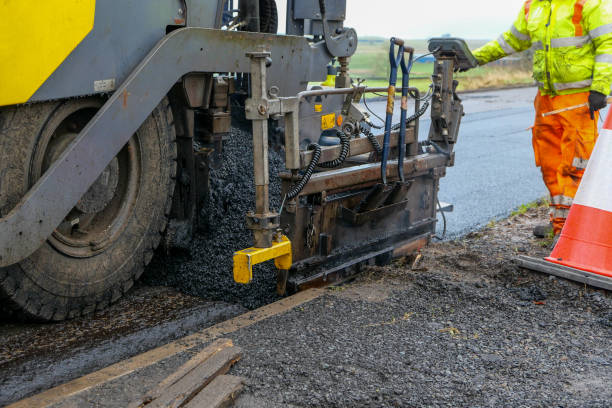Introduction:
Maintenance And Calibration Of Asphalt Pavers: Maintaining and calibrating asphalt pavers is crucial for achieving top-notch road quality.
Whether you’re a seasoned road construction professional or a curious enthusiast, this easy-to-follow guide will walk you through the essential steps to keep your asphalt paver in tip-top shape, ensuring optimal performance and longevity.

- Regular Inspections for Peak Performance: Regularly inspect your asphalt paver for signs of wear and tear. Look out for loose bolts, damaged components, or any leaks. A quick visual check before operation can prevent potential issues and keep your machine running smoothly.
- Proactive Lubrication: Just like any other machinery, proper lubrication is key to the longevity of your asphalt paver. Keep an eye on lubrication points and follow the manufacturer’s recommendations for the type and frequency of lubrication needed. Well-lubricated parts ensure seamless operation and minimize friction-related wear.
- Precise Calibration for Optimal Results: Calibrating your asphalt paver is akin to tuning a musical instrument – precision matters. Regularly check and calibrate the screed, sensors, and any leveling components to guarantee accurate asphalt thickness and smoothness. This ensures that your paver delivers top-notch results on every project.
- Cleaning for Longevity: Dirt and debris can wreak havoc on your asphalt paver if left unattended. Regularly clean the machine, paying special attention to the conveyor system, screed plates, and augers. A clean machine not only operates more efficiently but also prevents unnecessary wear and tear.
- Monitor and Adjust Conveyor Speed: The conveyor speed plays a crucial role in the quality of asphalt placement. Keep a close eye on the conveyor speed and adjust it according to the mix and paving conditions. This simple step can significantly impact the evenness and consistency of the laid asphalt.
- Routine Maintenance Schedule: Establish a routine maintenance schedule based on the manufacturer’s guidelines. This should include regular checks of engine oil, hydraulic fluid, filters, and other vital components. Following a proactive maintenance schedule prevents unexpected breakdowns and keeps your asphalt paver in peak condition.
- Invest in Quality Replacement Parts: When it comes to replacing parts, always opt for high-quality, manufacturer-recommended components. Using genuine parts ensures compatibility and reliability, ultimately extending the lifespan of your asphalt paver.
Conclusion:
By incorporating these easy-to-follow maintenance and calibration practices into your routine, you can enhance the performance and longevity of your asphalt paver. Remember, a well-maintained machine not only ensures the success of your road construction projects but also contributes to safer and smoother roads for everyone.
Asphalt pavers are essential resources used in road construction and repair. Proper maintenance and calibration can ensure these machines last a long time and perform efficiently. This article will discuss the importance of pavement maintenance as well as steps for calibrating an asphalt paver.
Pavement maintenance is essential because it prevents the need for costly repairs that can result in delays, enhanced operational costs and sometimes even the need for a complete reconstruction. Regular maintenance and calibration can help lengthen the service life of the asphalt paver by ensuring it is performing to its full potential.
So how should one calibrate an asphalt paver? The first step is to set the wear-resistant machine track. This is done by checking the shoe thickness and adjusting the pressure on the tires. Adjust any deflectors and conveyor chains that may be worn and check the wheel alignment.
Next, move the side panel assemblies to allow for a good view of the material depths. This can be done by adjusting the chain links to ensure the paver can effectively control the amount of asphalt mix. To further calibrate the asphalt paver, refer to and adjust the calibration valves according to the manufacturer’s manual.
Finally, one should observe the condition of the pneumatichydraulic system as well as the oil filters to ensure they are in working condition. After all adjustments have been made, be sure to take a test run with the asphalt paver to make sure it is operating properly.
Asphalt pavements require regular maintenance and calibration if they are to last and perform at high levels. The steps covered in this article will help pave the way for a successful asphalt paver calibration. Proper calibration will reduce the risk of costly repairs and unnecessary delays, helping only benefit in the long run.
